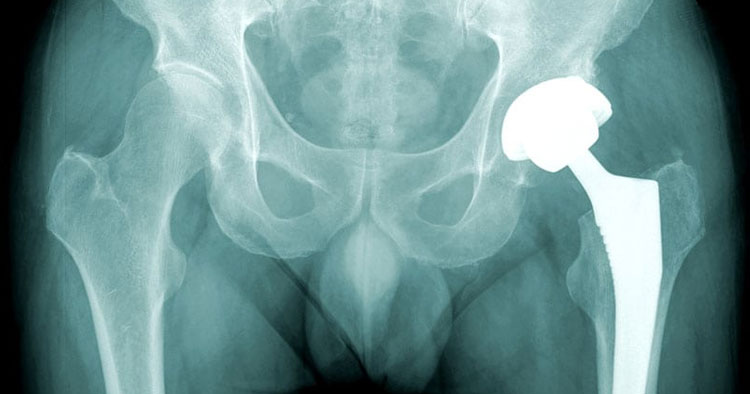Injury Rehabilitation and Training, Muscle Pain and Tendinopathy
Trendelenburg Sign: Causes And Diagnosis
Some Potential Causes Of A Trendelenburg Sign
A positive Trendelenburg sign and the resulting Trendelenburg gait pattern can occur as the result of any number of causes of which some potential causes are listed below:
- Following trauma to the hip and pelvis, including fracture, or direct trauma to the soft tissues.
- Post surgically, such as following total hip replacement surgery, this is due to the surgical dissecction of the gluteus medius muscle during surgery to help expose the hip joint space so surgery can be performed.
- Injury to the superior gluteal nerve innervating the hip abductor muscles.
- Muscular dysfunction, for example weakness in the gluteus minimus, gluteus medius, or TFL muscles.
- Neurological conditions such as following stroke, or a result of muscular dystrophy like pelvic girdle dystrophy and hemiplegic cerebral palsy.
- Lumbar spine pathology impacting the neural structures that ultimately supply the hip abductor muscles.
- Developmental hip disorders such as dysplasia of the hip, congenital dislocation of the hip, or slipped capital femoral epiphysis can all lead to a Trendelenburg gait pattern.
The above situations can directly cause, or lead to muscular weakness that can ultimately lead to a “positive” Trendelenburg sign. As a Sydney physio working in a Sydney CBD physiotherapy practice the majority of clientele demonstrating a Trendelenburg gait pattern that we see are the result of post surgical weakness, or muscle imbalances and dysfunction. Frequently the individual will present for treatment, unaware of their hip abductor weakness, often seeking treatment due to some other lower limb pathology. A complaint where most likely their hip abductor weakness and associated gait change has contributed too, examples include knee pain, hip or back pain.
What Is The Clinical Presentation Of The Trendelenburg Sign
In a normal gait pattern, the trunk and pelvis are maintained relatively stable with minimal movement of the pelvis from side to side as weight is shifted from one leg to the other through out the walking, or running cycle.
- Two common movement strategies as a result of weakness, or poor control of hip abductors include the classic Trendelenburg gait (as previously described), whereby the pelvis of the lower limb in swing phase drops because the recruitment of hip abductor muscles in the stance limb isn’t sufficient to maintain a level pelvis leading to the classic hip drop gait pattern.
- The other strategy which can be referred to as a compensated Trendelenburg pattern is another adapted movement pattern whereby the trunk leans over towards the stance limb (rather than towards the swing leg as occurs in the classic Trendelenburg gait), this is again a compensated strategy working to bring the individuals center of mass over their base of support on the stance side.
Diagnostics Assessment And Testing For A Trendelenburg Gait Pattern
Visually, the Trendelenburg test can be used to determine the integrity of hip abductor muscle strength and function. X-rays can also be used to confirm diagnosis when the Trendelenburg test is performed under X-ray and subsequently hip and pelvis angles are measured on film.
When pain in the hip and groin area accompanies a Trendelenburg gait pattern, again an X-ray and other investigations can be useful to help detect the cause of the pain and potential reasons for the presence of the Trendelenburg gait. Trendelenburg gait is best visualized from a front or back view, however gait observation of the individual walking from the side view can enable detection of any ankle dorsiflexion weakness (potential foot drop). A foot drop can lead to an inability of the foot to clear the ground during swing phase and is frequently compensated for by excessive hip and knee flexion when walking to allow appropriate clearance of the ground during the swing phase and can sometimes be confused for a Trendelenburg gait.
Disclaimer: Sydney Physio Clinic provides this information as an educational service and is not intended to serve as medical advice. Anyone seeking specific advice or assistance on Trendelenburg Sign: Causes And Diagnosis should consult his or her personal trainer, physiotherapist, general practitioner or other appropriately skilled practitioner.


